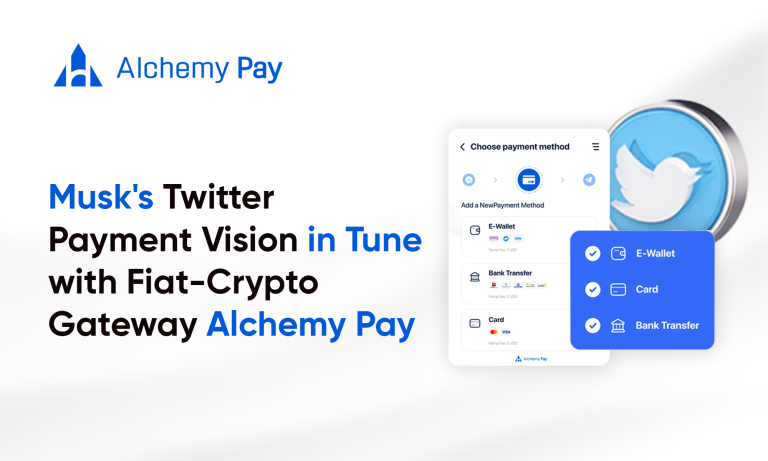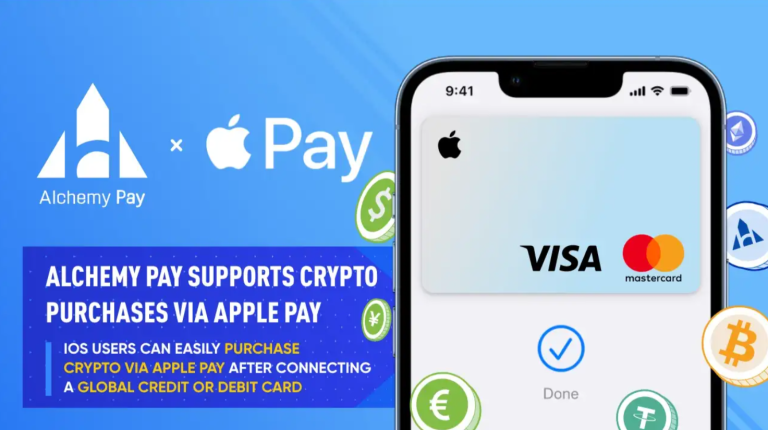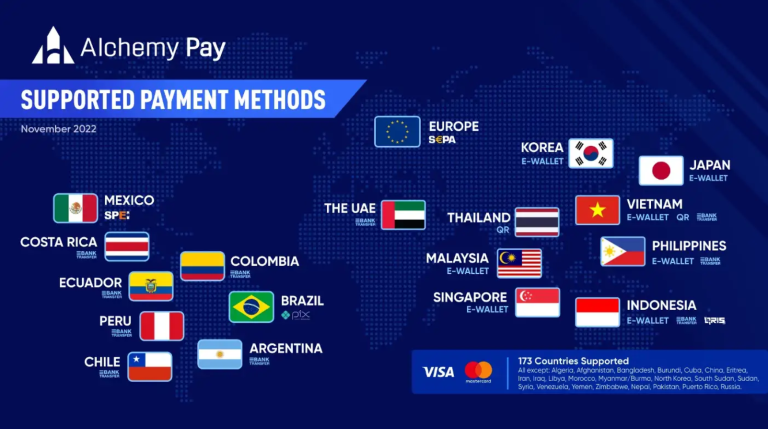Musk’s Twitter Payment Vision in Tune With Fiat-Crypto Gateway Alchemy Pay

Elon Musk’s Twitter has fallen into revenue difficulties, hoping to find new sources of revenue outside the original $5 billion a year advertising business model.
According to a recent Financial Times report, Musk is betting this ambition for revenue growth on the payments business. He has said he wants Twitter to become a “universal app” that combines information, payments and commerce. As part of the plan, Twitter intends to provide fintech services, such as peer-to-peer transactions, savings accounts and debit cards. Previously, Twitter has been testing the payment business in scenarios such as rewarding creators.
An official document shows that Twitter has registered as a payment processor with the U.S. Treasury Department in November 2022 and began actively applying in various states to obtain the licenses required for the payment business, which is expected to be completed within a year to meet the regulatory and compliance needs of Twitter payments.
Notably, the payment system will first support payments in fiat currency, but the idea of adding cryptocurrency payments has been included in the initial idea, according to informed sources. With Twitter being the main battleground for the Web3 project’s social media presence and Musk himself being a long-time holder of Dogecoin, there is speculation that Musk intends to lead Twitter into the crypto payments business and make payments a part of Twitter’s grand vision.
As a result of this expectation, Dogecoin (DOGE) rose after the news was released, gaining 10% in 24 hours with a surge in trading volume. Other crypto payment concept tokens such as $MOB and $ACH etc. all saw 30%+ gains.
Crypto Payments Providers Have Competitive Landscape
Musk’s idea of leading Twitter into the crypto payments is not unfounded. While cryptocurrencies are already widely recognized and used, crypto payments are still at a relatively early stage when traditional mobile payments are so well developed. PayPal is currently the world’s largest online payment provider with over 400 million active users worldwide, while MoonPay, the leading payment provider positioned as “PayPal for Crypto”, has only 7 million verified users. Twitter, with its base of users and natural proximity to Web3, has a lot of space to play.
Cointelegraph Research released a report in 2022 that provides a detailed breakdown of how traditional businesses access crypto payments. The report noted that a lot of well-known companies from various industries, including Subway, PlayStation, AT&T, Home Depot, Whole Foods and others, have supported the use of cryptocurrencies to receive payments. Certain countries have also given the green light to cryptocurrencies along the way, such as El Salvador and the Central African Republic, which have adopted bitcoin as legal tender, and Panama and Paraguay, which may also complete the move in recent years. With the further integration of cryptocurrencies with traditional finance, the acceptance of cryptocurrencies and digital assets as a method of payment has become an inevitable trend.
In addition to the broader prospect of crypto payments due to the higher acceptance of digital assets by enterprises and businesses, crypto payments also have advantages that traditional payments do not have and broader application scenarios. For example, in the cross-border payment scenario, the clearing and settlement efficiency of crypto payment will be much higher than that of traditional cross-border remittance transfer. In some Latin American countries with severe currency devaluation, the decentralized crypto financial system is more stable than the local fiat currency system, which has brewed a lot of demand for crypto payments.
At present, players involved in the crypto payment can be basically divided into traditional payment giants, centralized exchanges and crypto payment service providers. Traditional mobile payment service providers such as Stripe and Apple Pay are more mature in technology and can cooperate with exchanges or third-party service providers to provide or adopt API for deposit and withdrawal. Exchanges such as Binance and Coinbase cooperate with centralized card organizations such as Visa and MasterCard to issue co-branded credit cards and support users to use credit cards for spending. Crypto payment providers like MoonPay, BitPay, Ramppay, Alchemy Pay, Transak and others are Web3 native crypto payment players, each has its own characteristics with different payment underlying protocols and positioning.
Although the crypto payment market is still in the early stage and far from forming monopolies, many players have already entered and laid out in this field. With the foreseeable future that traditional giants such as Twitter are setting their eyes on this battlefield and fiat currencies gradually flowing into the cryptocurrency market, players in the field are facing a more competitive situation.
Alchemy Pay Exemplifies a Quality Modern Payment Service with 5 Years Crypto Expertise
Amidst many crypto payment products of the same type, Alchemy Pay does not have a prominent reputation, but has earned itself a solid place in the crypto payment landscape with its quality product and deep industry expertise. The Financial Times reported Elon Musk’s company has begun applying for regulatory licenses in US states. Forbes award-winning fiat-crypto pioneer, Alchemy Pay, has already begun this process and currently holds its MTL and is deep into the MSB process there. As a fiat-crypto payment gateway with on and off ramps, NFT checkout and a crypto payment system, a company like Alchemy Pay is making its payment methods futureproof.
As a crypto payment gateway bridging Web2 and Web3, the quantity and quality of access to local channels is an important criterion to test the ability of payment service providers. More local payment channels mean that users have a broader choice, and can support users to complete transactions using their most familiar payment methods, allowing a seamless transfer of various tokens on the blockchain to fiat currency or vice versa. Alchemy Pay has made a lot of solid progress in localized payment channel access and has accumulated excellent user reputation and brand influence in this area. Until now, Alchemy Pay has partnered with 300+ local payment channels and served millions of users from Southeast Asia, Latin America, and the SEPA area.
In terms of market strategy, Alchemy Pay attaches great importance to reaching and expanding in emerging markets, which is one of the elements that set it apart from other crypto payment providers. Due to the imperfect financial systems in Southeast Asia, Latin America and other regions, accompanied by high fiat currency inflation and underdeveloped cross-border payments, these emerging markets are the most promising regions for promoting crypto payments. When looking at market strategy, putting these regions into perspective means more opportunities. From the information disclosed on the official website, Alchemy Pay has accessed local payment channels in the Philippines, Indonesia, Vietnam, Singapore, Brazil, Peru, Chile, Colombia and other regions, covering more than 410 million users. Compared with other crypto payment products such as MoonPay, Ramp.network, Mercuryo and others, Alchemy Pay is one of the few payment service providers that include Latin America as a key service area, while also focusing on providing global services such as Visa and MasterCard access. This clear market approach also fully demonstrates its vision to groundly lay out the crypto payment field.
Thirdly, compared with other veteran crypto payment providers, Alchemy Pay has its advantages as a native crypto player. For example, the US online payment giant Stripe began to pivot towards crypto payments in 2022, announcing that it would rapidly serve 180 countries to buy 180 cryptocurrencies. However, Stripe still belongs to Web2 traditional application which is not as effortless as other native players when breaking the ice in the native crypto payment landscape. In contrast, the native crypto payment players represented by Alchemy Pay understand the needs and pain points of the crypto industry better and can provide convenient access solutions in conjunction with actual scenarios.
At the same time, the position of Web3 native players makes Alchemy Pay more closely connected to other crypto players. For example, Alchemy Pay has integrated into Binance Pay and Solana Pay, and their users can also use the services provided by Alchemy Pay. Alchemy Pay also supports the use of ENS domains to complete cryptocurrency purchases, taking into account the experience and needs of crypto-native users.
Founded in Singapore in 2018, Alchemy Pay is a payment gateway for businesses, developers and users to seamlessly connect cryptocurrencies with global fiat currencies. It blends cryptocurrency systems with fiat financial systems, allowing users to seamlessly switch between cryptocurrencies and fiat currencies in both directions through the On-Ramps and Off-Ramps solutions it offers, and platforms and dApps can also using plugins and APIs to integrate. In addition, it provides other services such as NFT Checkout, which also supports users to purchase NFT with fiat currency, broadening the scenario of fiat-cryptocurrency payments. 300+ fiat currency payment channels have been added in Alchemy Pay On-ramp solution to support Visa and MasterCard payments in 173 countries and 30+ fiat currencies, and has served hundreds of traditional businesses web3 parties.
 It is reported that Alchemy Pay has recently added support for buying crypto through fiat currency using mainstream payment methods such as Apple Pay and Google Pay, and has been officially certified as a payment service provider by Visa and MasterCard, the world’s two largest bank card organizations, which provides a high level of endorsement of security and compliance for its fiat-cryptocurrency transfer business worldwide. As a well-established crypto payment service provider, its steady development over the years has also gained recognition from the secondary market. As of press time, its native token $ACH has gained over 75% in 30 days.
It is reported that Alchemy Pay has recently added support for buying crypto through fiat currency using mainstream payment methods such as Apple Pay and Google Pay, and has been officially certified as a payment service provider by Visa and MasterCard, the world’s two largest bank card organizations, which provides a high level of endorsement of security and compliance for its fiat-cryptocurrency transfer business worldwide. As a well-established crypto payment service provider, its steady development over the years has also gained recognition from the secondary market. As of press time, its native token $ACH has gained over 75% in 30 days.
This is a sponsored post. Learn how to reach our audience here. Read disclaimer below.




